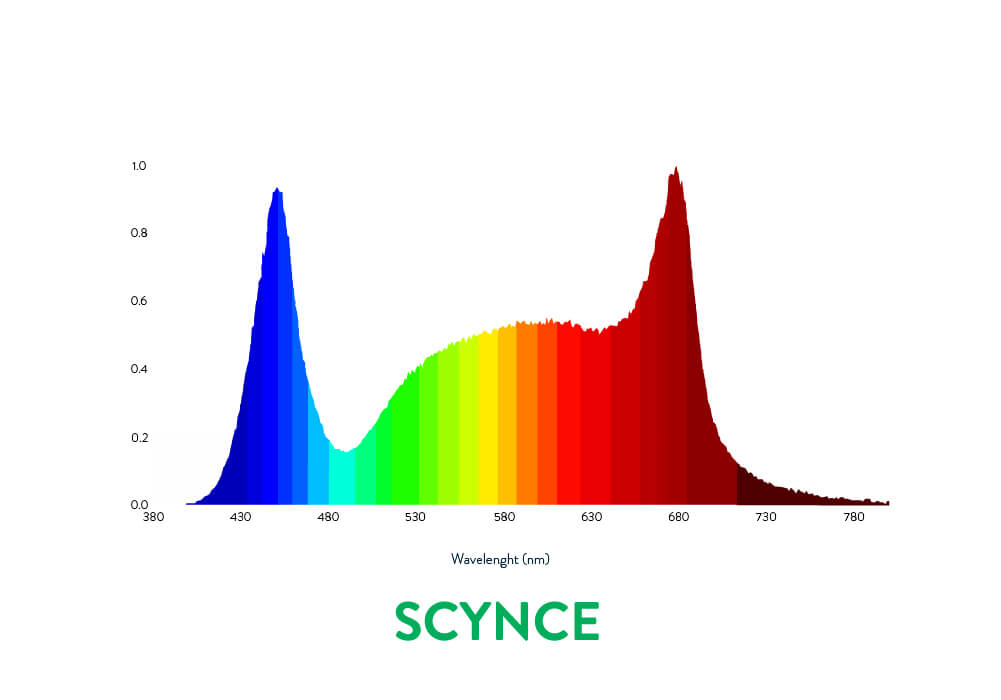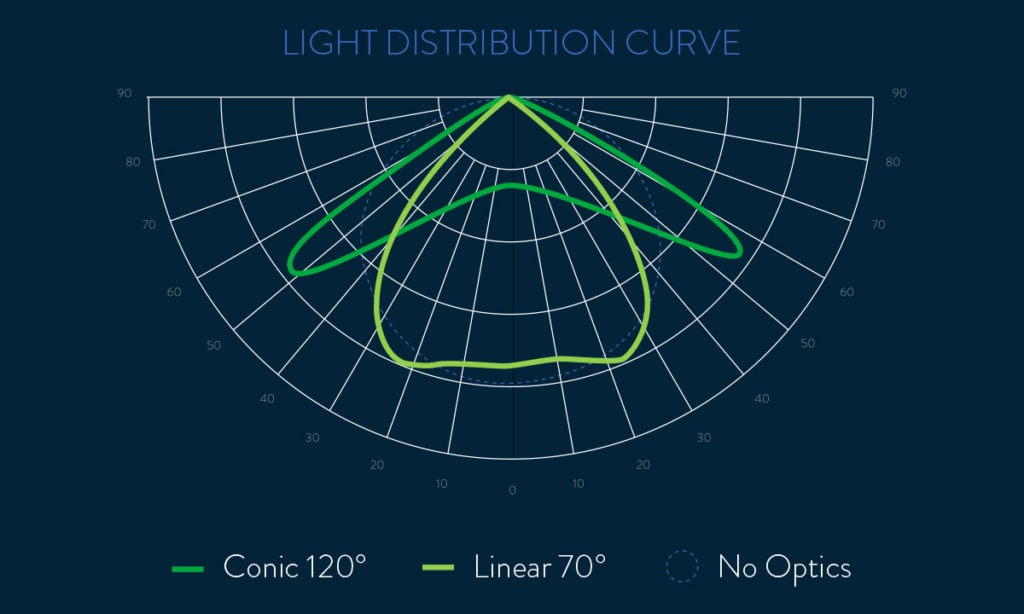Scynce’s secondary optics were specifically designed to spread out the pin point intensity that plague most LEDs and some traditional lights. This means that the brightest point is typically on the widest part of the beam (or on “the angle”) which allows the lights to be mounted closer to the plants without the risk of burning or bleaching.


















